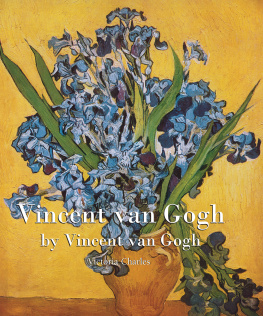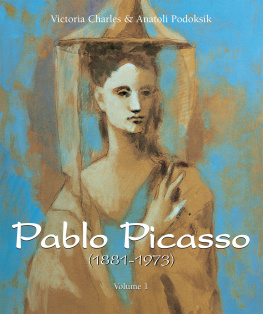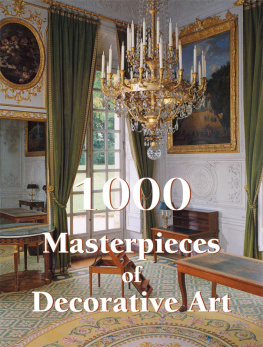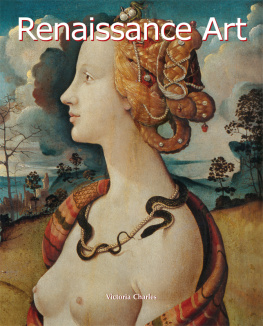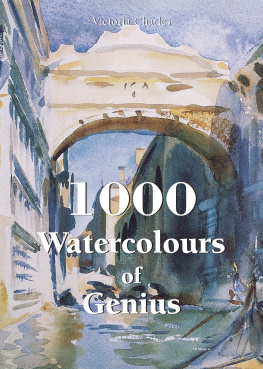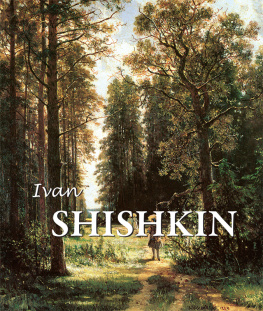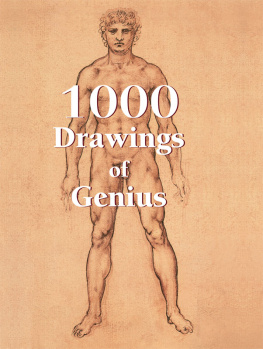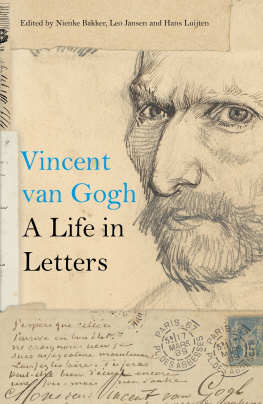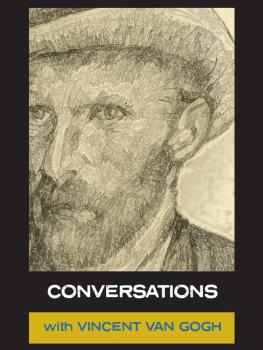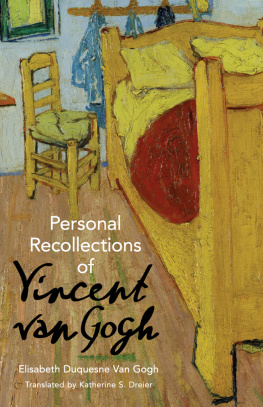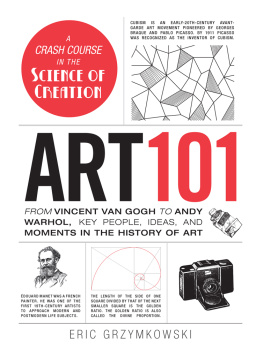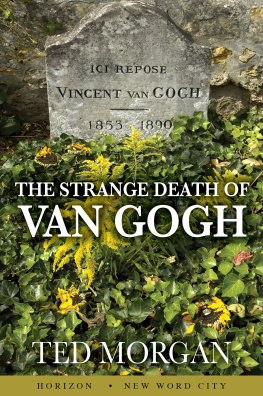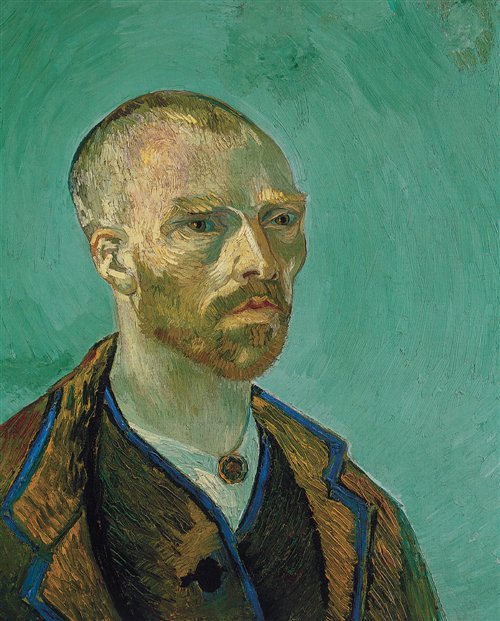Baseline Co. Ltd
All rights reserved.
No part of this publication may be reproduced or adapted without the permission of the copyright holder, throughout the world. Unless otherwise specified, copyright on the works reproduced lies with the respective photographers, artists, heirs or estates. Despite intensive research, it has not always been possible to establish copyright ownership. Where this is the case, we would appreciate notification.
Arles, September 1888.
Oil on canvas, 61 x 50 cm. Fogg Art Museum,
Cambridge, Massachusetts.
As through a looking glass,
by dark reason
H e sat on that chair. His pipe lies on a reed seat next to an open tobacco pouch. He slept in that bed, lived in that house. It was there that he cut off a piece of his ear. We see him with a bandaged head, the pipe in the corner of his mouth, looking at us. Vincent van Goghs life and work are so intertwined that it is hardly possible to see his pictures without reading in them the story of his life, a life which has been described so many times that it is by now the stuff of legend. Van Gogh is the incarnation of the suffering, the misunderstood martyr of modern art, the emblem of the artist as an outsider.
In 1996 Jan Hulsker, the famous van Gogh scholar, published a corrected catalogue of the complete works in which he questioned the authenticity of 45 paintings and drawings. What concerned Hulsker were not only the forgeries, but also canvases that were falsely attributed to van Gogh. In a similar vein, the British art historian Martin Bailey claimed to have recognized more than one hundred false van Goghs, among them the Portrait of Dr. Gachet, which exists in two versions. A Japanese industrialist purchased one of these in 1990 for 82.5 million dollars the highest price ever paid for a painting. The new owner then shocked the public by announcing that after his death he wanted to be burned with the picture. Out of respect for the feelings of European art lovers, he later changed his mind and decided to build a museum to house his collection. However, if someone should prove that the Portrait of Dr. Gachet is a fake, public interest in the painting would disappear.
It became apparent early on that the events of van Goghs life would play a major role in the reception of his works. The first article about the painter was published in January 1890 in the Mercure de France . The author of the article, Albert Aurier, was in contact with a friend of van Gogh named Emile Bernard, from whom he learned the details of van Goghs illness. At the time, van Gogh was living in a mental hospital in Saint-Rmy, near Arles. The year before, he cut off a piece of his right ear. Without explicitly revealing these facts from the artists life, Aurier nevertheless introduced his knowledge of the apparent insanity of the painter into his discussion of the paintings themselves. Thus, he used terms like obsessive passion
With his characterization of the artist as a mad genius, this critic laid the foundation for the van Gogh myth, which began to emerge shortly after the death of the painter. After all, Aurier did not believe that van Gogh would ever be understood by the general public: But whatever happens, even if it became fashionable to buy his canvases which is unlikely at the prices of M. Meissoniers little infamies, I dont think that much sincerity could ever enter into that belated admiration of the general public. A few days after van Goghs funeral in Auvers-sur-Oise, Dr. Gachet, who looked after the painter at the end of his life, wrote to van Goghs brother Theo:
This sovereign contempt for life, doubtless a result of his impetuous love of art, is extraordinary... If Vincent were still alive, it would take years and years until the human art triumphed. His death however, is, so to speak, the glorious result of the fight between two opposed principles: light and darkness, life and death.
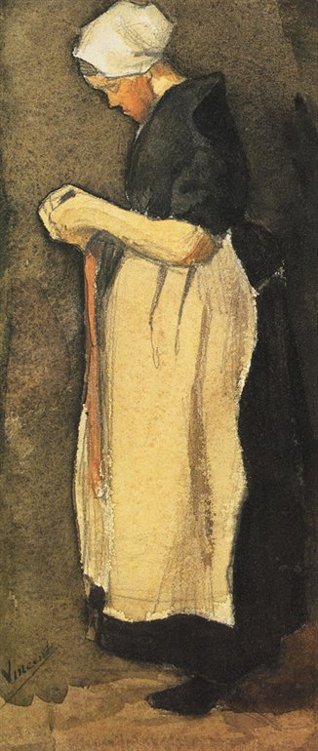
Fishermans Wife at Scheveningen,
Etten, December 1881. Watercolour, 23.5 x 9.5 cm.
Van Gogh Museum, Amsterdam.
Van Gogh neither despised life nor was he its master. In his letters, nearly seven hundred of which have been published, he often wrote about his desire for love and safety:
I should like to be with a woman for a change, I cannot live without love, without a woman. I would not value life at all, if there were not something infinite, something deep, something real.
On several occasions he stressed that it would be more worthwhile to make children than pictures. The parsons son had taken his analogy from The Excellencies of Love in the first epistle to the Corinthians: For now we see through a glass, darkly: but then face to face: now I know in part; but then shall I know even as also I am known. This longing for a place in the community and the struggle for renown are two themes that can be traced throughout van Goghs life.
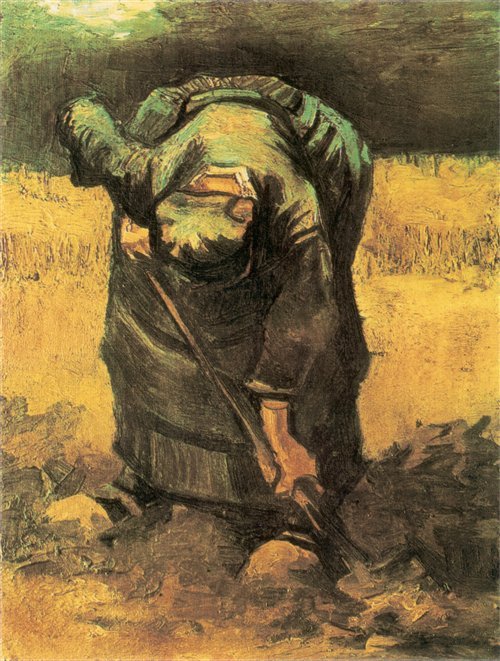
Peasant Woman Digging,
Nuenen, July 1885.
Oil on canvas, 42 x 32 cm. The Barber Institute of Fine Arts,
University of Birmingham, Birmingham.
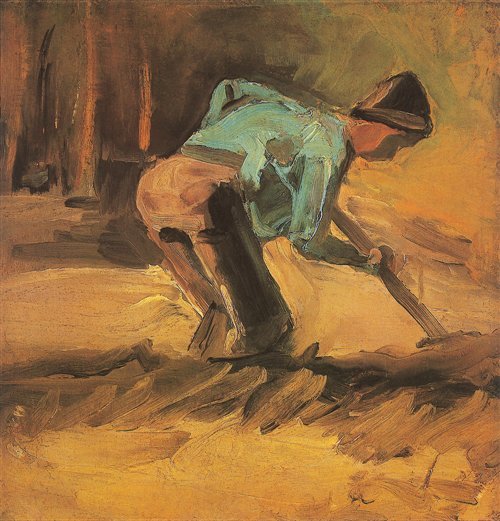
Peasant Working,
The Hague, August 1882.
Oil on paper on wood, 30 x 29 cm.
Private Collection.
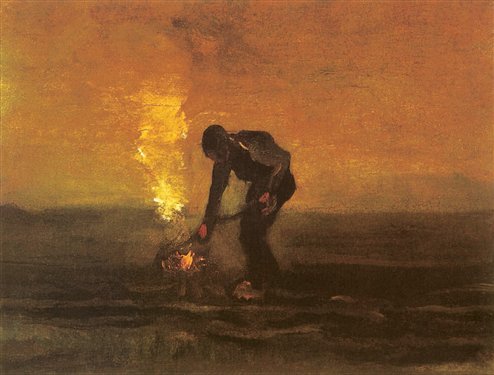
Peasant Burning Weeds,
Drenthe, October 1883.
Oil on wood, 30.5 x 39.5 cm.
Private Collection.
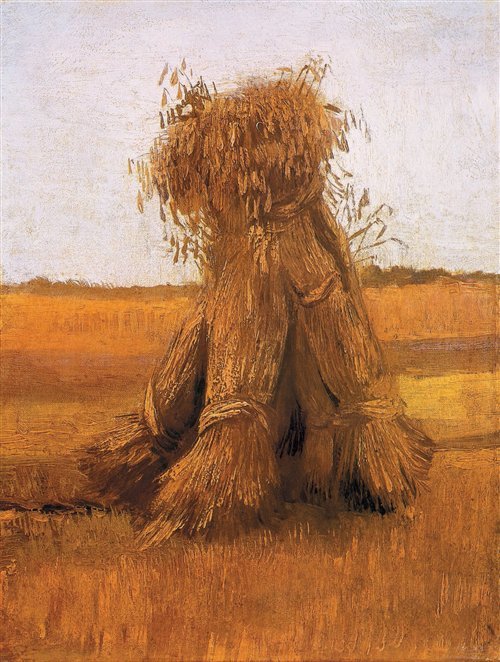
Sheaves of Wheat,
Nuenen, July-August 1885.
Oil on canvas, 40 x 30 cm. Krller-Mller Museum, Otterlo.
Letter from Vincent van Gogh to Theo van Gogh
The Hague, 13 December 1872
Dear Theo,
What good news Ive just read in Fathers letter. I wish you luck with all my heart. Im sure you will like it there; its such a fine firm. It will be quite a change for you.
I am so glad that both of us are now to be in the same profession and in the same firm. We must be sure to write to each other regularly.
I hope that Ill see you before you leave; we still have a lot to talk about. I believe that Brussels is a very pleasant city, but its bound to feel strange for you in the beginning. Write to me soon in any case. Well, goodbye for now, this is just a brief note dashed off in haste, but I had to tell you how delighted I am at the news. Best wishes, and believe me, always,

